2021 Volkswagen ID.4 Review: Coming Full Circle

In VW’s own words, the 2021 ID.4 is the brand’s most important model for North America in decades. And it is not a marketing ploy. It is one of the few EVs in the market that doesn’t chase after acceleration numbers (the AWD model is there for that), was designed to be an electric crossover from the ground up, and isn’t a conversion of an already existing car.
SEE ALSO: 2021 Volkswagen ID.4 AWD First Drive Review: Broadening the EV AppealThe design is simple and straight forward. It has a friendly face and there are no sporty lines or flared wheel arches. It looks like a regular crossover which just happens to be electric. In a lot of ways, it’s reminiscent of the original Beetle. The Bug was a simple and straight-forward too, an affordable A to B vehicle for the masses that became hugely popular. Volkswagen has a unique opportunity here with the ID.4. Hopefully, the electric crossover can help VW occupy a prominent space in the crossover EV market akin to the position the original Beetle helped Volkswagen achieve in the economy car segment.
Interior and Cabin Space
Given its relative compact size–about six inches shorter than the Mustang Mach-E–the ID.4 offers a cavernous cabin. VW achieved this by utilizing the space under the hood to house the 12V battery, AC compressor and the washer fluid tank, things which normally are close to the cabin. You lose the frunk as a consequence, but your passengers will not mind the omission.
A minimalistic dashboard is the centerpiece of the ID.4’s cabin. The single panel with brushed aluminium finish extends from the steering all the way to the passenger side A-pillar and adds a bit of vibrance to an otherwise predominantly black dashboard. It also complements the seats finished in white faux leather.
FAST FACTS
| Engine: | Single electric motor |
| Output: | 201 hp 229 lb-ft of torque |
| Range: | 250 miles |
| Transmission: | Single speed direct drive |
| US fuel economy (MPGe): | 104/89/97 |
| CAN Fuel Economy (Le/100 km): | 2.3/2.6/2.4 |
| Starting Price (USD): | $41,190 (incl. dest.) |
| As-Tested Price (USD): | $46,190 (incl. dest.) |
| Starting Price (CAD): | $46,945 (incl. dest.) |
| As-Tested Price (CAD): | NA |
You get two screens: one for the instrument cluster, a larger 12.0-inch screen for the infotainment and six buttons on the center console along with three sliders; one for the volume flanked by two for the climate control on either side. All are touch controls.
The front perches are very comfortable and enveloping. Taller passengers could however find the squabs to be a tad short. There is however, no dearth of head or legroom. 41.1 inches (1,044 mm) of headroom at the front and 38.4 inches (975 at the rear proves ample for all adults. While 41.1 (1,044 mm) and 37.6 inches (955 mm) of legroom in the front and rear is less compared to the competition, combined with a flat floor at the rear, it is adequate to seat three adults in comfort. And they would be comfortable on longer hauls as well. You also get a panoramic sunroof that adds to the feeling of overall space. It doesn’t open, however.
SEE ALSO: Ford Mustang Mach-E vs Tesla Model Y ComparisonOne peculiar thing though: rear passengers sit a tad higher compared to front occupants. Maybe the rear mounted electric motor has something to do with it. Like the cabin, the trunk is cavernous and offers 30.3 cu-ft (857 liters) of luggage capacity with the rear row up. Speaking of, the rear seats are split 60/40 and folding the bench entirely increases the luggage capacity to 64.2 cu-ft (1,945 L).
Tech and features
Calling the ID.4’s interior minimalist and futuristic wouldn’t be a stretch. Everything is digital and all of it is controlled by touch. When I say everything, I mean everything. The only physical buttons in the whole cabin are controls for windows, a knob for the wing mirrors and a latch to open the hood. That’s it.
A small panel to the left of the steering operates the lighting. But don’t let the rubberized surface fool you, this too is touch operated. Everything from the climate to the volume, driving modes, even the roof sun shade is touch operated. You can either tap the climate and volume controls or slide your finger to adjust the temperature and volume. While the absence of any physical buttons is in tune with the futuristic vibe of the ID.4, VW should have retained a few physical buttons, especially for the climate control and drive mode selector for ease of operation while driving. Or at least provide touch surfaces with haptic feedback like the ones on the steering wheel. Being able to operate various functions of a car on muscle memory alone is the true definition of an intuitive interior and as we move into the future, that intuitiveness is falling. It’s not a shortcoming for the ID.4 but for the automotive industry as a whole.
Another cumbersome set of controls are the window switches. Unlike conventional cars, the ID.4 only gets two switches on the driver-side and a button (touch again) marked “rear” lets you cycle between front and rear windows. Four switches would have been more intuitive.
Speaking of, the touchscreen infotainment system is plenty intuitive. Cycling through the menus is quite easy and the interface is quick to respond to touch inputs. But you do need time to get used to the interface and touch controls. You also get wireless Android Auto along with wireless Apple CarPlay which is nice.
The all-digital instrument cluster moves with the steering column so no part of it is hidden when you adjust the steering. As someone who likes to place his steering lower than most, I appreciate the thoughtfulness. Ironically though, while the cluster has three different views, different combinations of speed, range, navigation and driver assistance systems, it doesn’t display the trip. The only way to view the miles done is through the larger screen. It’s not a bother just something out of the ordinary.
Driving dynamics and range
With the electric motor mounted at the rear, it’s hard not to draw a parallel with the original rear-engine, rear-drive Beetle. And just like the original Beetle, a rear motor, rear drive crossover is a far cry from the conventional electric setup. But it works.
The 201 horsepower and 229 lb-ft of torque prove adequate to haul the 4,665 lb (2,116 kg) electric crossover around without feeling bogged down. You would expect an explosion of torque from most electric vehicles; the ID.4 is unlike most EVs. Apart from the absence of engine noise, the ID.4 feels fairly normal to drive.
To get going, you need to twist a trapezoidal gear selector on the tiny instrument cluster, which can be quite hard to spot if you don’t know what you’re looking for. The ID.4 offers two drive modes, D for drive and B for single pedal operation that automatically applies brakes when you lift off the gas. On the move, the ID.4 feels quite normal again, sans the engine noise.
The steering while precise feels quite lifeless. Inside the city, you can rarely ever feel what the tires are doing but the VW goes where you want it to so there is little cause for complain. Also, I felt that shifting into B is the best way to drive the ID.4 as it takes the numb brake pedal out of the equation entirely. Plus, the auto braking system is a lot more progressive and smoother than other EVs. It doesn’t feel like its braking to avoid a crash all the time and you seldom need to apply additional pressure when slowing down for a turn.
SEE ALSO: 2021 Ford Mustang Mach-E Review: EV Power to the PeopleSpeaking of turns, despite a low center of gravity thanks to the heavy battery pack placed between the wheels, the ID.4 isn’t very exciting to drive. It handles like a well-balanced crossover but nothing about the way it tackles corners stands out. The suspension setup is well balanced but favors city driving. At city speeds it feels planted and makes short work of what most city surfaces will throw at it. Out on the highway the ride is nothing to complain about. Even the wind noise at cruising speeds is quite low and speaks volumes for the crossover’s sound insulation. Hit a bump at considerable speed however and the ID.4 struggles to cope. If you hit one while taking a fast corner it takes a second or two to settle back into its rhythm which can be quite unnerving.
On a full charge, the ID.4 promises 250 miles (420 km) of range from its 77 kWh battery. And it proves to be ample. In my three days with it, I did 150 miles (240 km), during which time the battery lost 131 miles (210 km). Admittedly most of it was city driving, but it also shows how well the energy recovery system of the ID.4 works. On the highway too, so long as you don’t cross 65 mph (105 kph), the range stays true. But go over 70 mph (120 kph) and you’ll be looking at a 10 mile drop in range for eight miles covered.
Verdict: 2021 Volkswagen ID.4 Pro S Review
Starting at $41,190 including destination for the Pro* ($46,945 CAD), the VW ID.4 is the most affordable EV crossovers on the market. The price doesn’t include federal tax credit which can slash the price of the electric crossover by up to $7,500. The Pro S we have here tips the scales at $46,190 including destination and offers a panoramic sunroof along with the larger 12.0-inch screen compared to the 10-inch one on the Pro.
Yes, the ID.4 isn’t perfect. The two window switch setup is beyond comprehension and the absence of physical buttons does eat into the intuitiveness required while driving. Also, with a max DC capacity of 125 kW, it isn’t the fastest charging EV either. But it works. It’s comfortable, spacious and an A to B vehicle that makes no big claims. It is a simple straight forward personal transportation solution for the future, just like the Beetle was for the past.
* In Canada, you only get the Pro in RWD and AWD
LOVE IT
- Price
- Adequate power and range
- Spacious cabin
LEAVE IT
- Only touch controls
- Not fun to drive
- Adverse weather will affect range

More by Kshitij Sharma




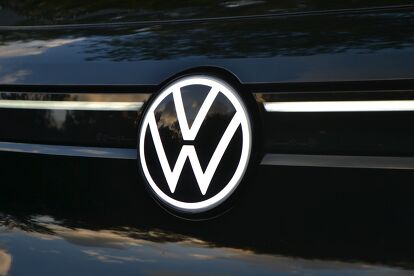

































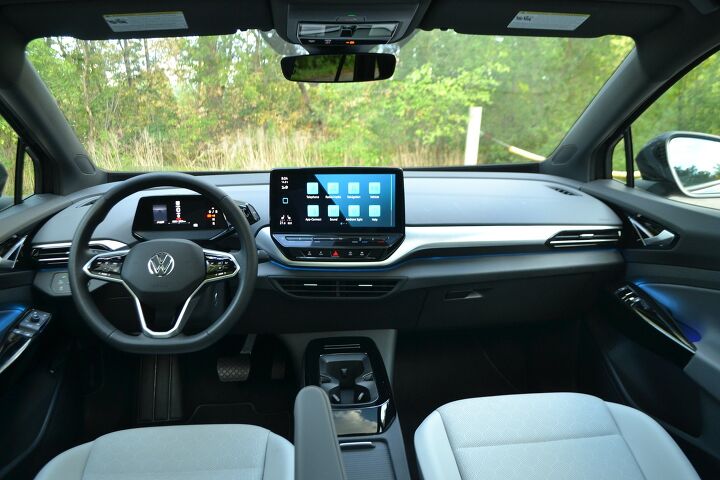





















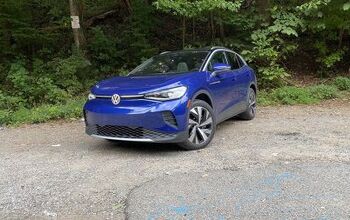

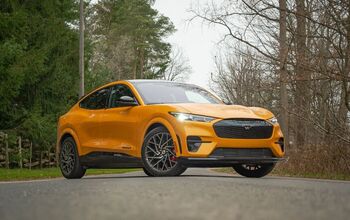
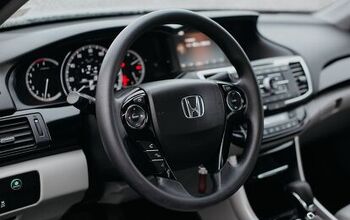
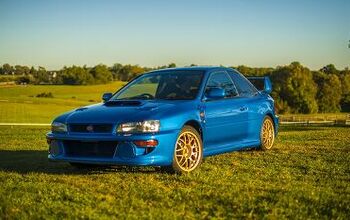




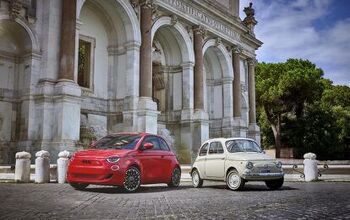



Comments
Join the conversation